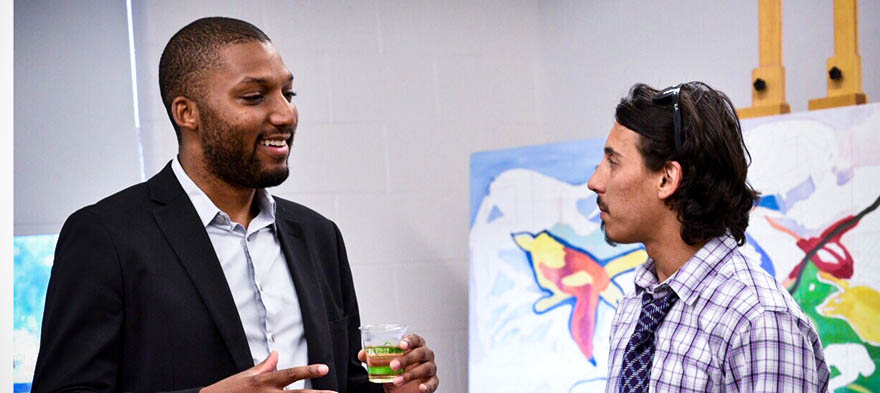
Apr 2, 2018 12:00:00 AM
Encourage and cultivate young Black and Brown children who have the qualities of good teachers.
Teachers strive to cultivate a student’s love of learning and nerdiness in their subject area. But how many White teachers intentionally do this with their Black and Brown students?
In addition to encouraging a passion for forensics or algebra, White teachers need to celebrate students of color who excel in storytelling, who lead their peers or who enjoy helping others. We need to deliberately nurture such skill sets so that these young people might one day return to our schools as teachers.
Make school a place Black and Brown students want to be and come back to when they grow up.
If we know that Black and Brown children are unfairly subjected to lower expectations, to discriminatory discipline practices, to “psychological trauma” and to overall inequitable experiences in the classroom by their White teachers, then we need to be intentional about changing this.
Start by making your classroom safe for your students of color. This means, you may have to do some soul searching about your pedagogy. Do your students of color feel comfortable expressing their opinions without being shut down? Are they welcome to share ideas in a communication style that fits them or do they have to fit your White middle-class way of communicating?
Evaluate your school’s culture. Are there Black and Brown students in positions of leadership? Are they up in front of other students—not as a token but as an authentic voice of the school community?
Be the kind of colleague that teachers of color want to work with.
This piece of advice seems kind of dumb, but let’s be honest with ourselves. No one wants to work with someone who says weird, insensitive things about the way you coordinate your socks and shoes, or how you enjoy talking to another teacher who looks like you (ever notice how White folks point out the three people of color talking to each other but never notice the clusters of White people huddled together?).
Let go of the need to say things like, “It’s so great you’re here. We really need [someone of your racial identity] to diversify the staff.” Please hold off on dropping “not all White people” at the end of conversations.
Invite your colleague of color to have lunch, go to happy hour or do any of the things you’d ask your White colleagues to do with you.However, don’t ask your colleague of color anything about race that you could have Googled.
Listen and have empathy. Every human wants to be heard. You don’t have to agree with someone’s point of view, you don’t have to understand why that comment by admin was a microaggression—just listen.
Demand your school culture to be more inclusive and supportive of teachers of color.
Teachers of color are leaving the classroom at a higher rate than their White colleagues. This is especially true for men of color and has everything to do with autonomy, inclusion and leadership.Trust the instructional practices of teachers of color—they are professionals, after all.If you know your colleague of color is likely to feel more isolated due to being a minority, then make some extra effort.
Incorporate teachers of color into the leadership fabric of your school that’s not connected to discipline. We know that teachers of color are disproportionately relied on to handle discipline issues and less likely to be sought after as instructional or subject-matter experts. White teachers must systematically change these practices if we want more teachers of color to stay in the classroom.
Find every opportunity to support any person of color who is considering becoming a teacher.
I personally have made a commitment to opening my classroom to more student observers and more student teachers.I’ve said “yes” a few more times. It also means I’ve strengthened my “no” response. Additionally, I don’t stop with classroom observations. Without being a creep, I offer as much support as I can to encourage that candidate of color to pursue a teaching degree.
Hope Teague-Bowling is an English teacher at the American Community School of Abu Dhabi and previously at Lincoln High in Tacoma, Washington. For her blog, An Educated Guess, she writes and speaks about faith, social justice, education policy, and other topics. She also co-hosts the "Interchangeable White Ladies" podcast.
The story you tell yourself about your own math ability tends to become true. This isn’t some Oprah aphorism about attracting what you want from the universe. Well, I guess it kind of is, but...
If you have a child with disabilities, you’re not alone: According to the latest data, over 7 million American schoolchildren — 14% of all students ages 3-21 — are classified as eligible for special...
The fight for educational equity has never been just about schools. The real North Star for this work is providing opportunities for each child to thrive into adulthood. This means that our advocacy...
Your donations support the voices who challenge decision makers to provide the learning opportunities all children need to thrive.
Ed Post is the flagship website platform of brightbeam, a 501(c3) network of education activists and influencers demanding a better education and a brighter future for every child.
© 2020–2024 brightbeam. All rights reserved.
Leave a Comment